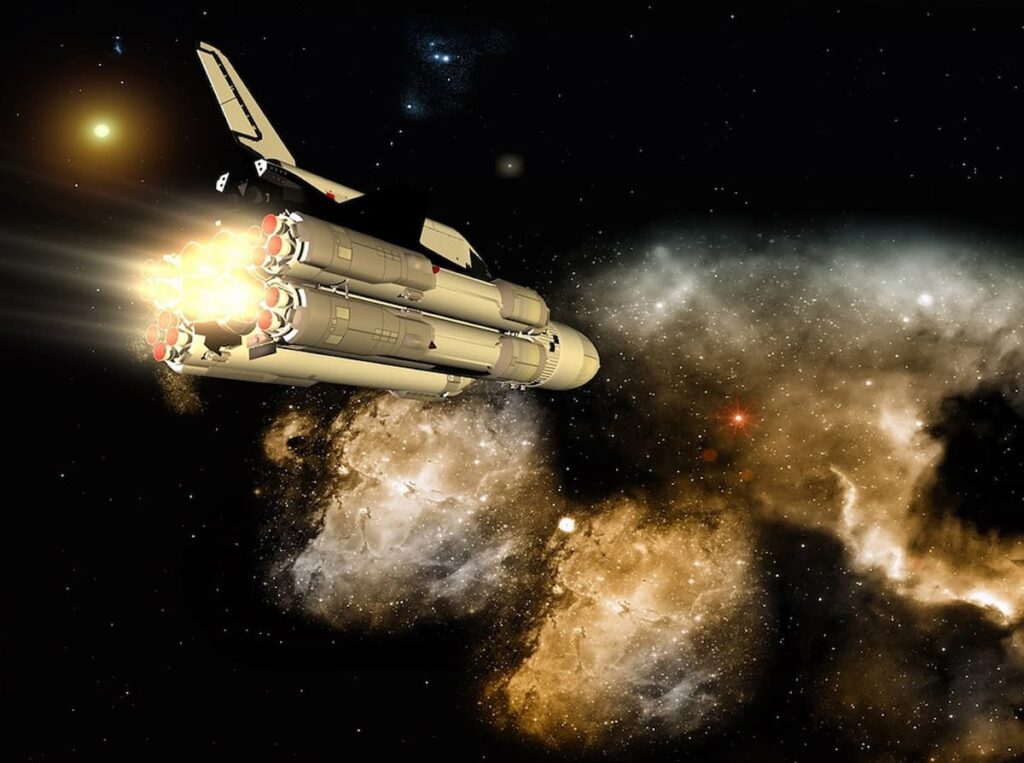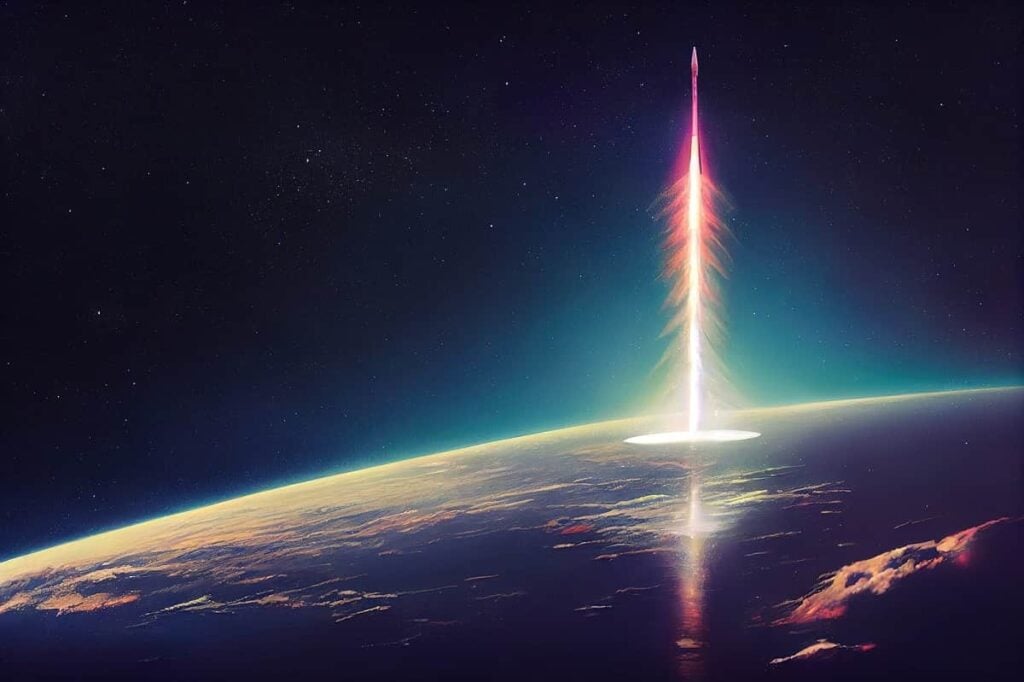Crewed Space Missions and Other NewSpace Predictions for 2019
Table of contents

It was the best of times, it was the worst of times … yada, yada, yada. Charles Dickens wrote the introduction to one of the greatest novels of the 19th century about 160 years ago. The dude certainly knew about the worst of times. At an early age, he was forced to leave school and work 10-hour days in a rat-infested warehouse where he earned a few shillings by pasting labels on pots of boot blacking, whatever the hell that was. So we feel a little sheepish complaining about anything, as we enter what will likely be an official recession in 2019. That’s why we thought we’d be positive, as much as it pains us, and focus on all of the cool stuff we think will happen in the NewSpace industry next year.

We offered a similar list of prognostications for 2018, and we’re pleased to say that most of our predictions came true to some degree. SpaceX continued to dominate, for example, completing 21 launches this year, culminating earlier this week with a mission to put a new generation GPS satellite into orbit. The company also just raised another $500 million this month, soaring to a valuation of $30.5 billion with $2.7 billion in total funding, as one of the most valuable startups in the world. Global internet (more on that below) also got a big boost after the Federal Communications Commission gave SpaceX and others the green light on proposed satellite constellations. We did completely miss the mark on our prediction that a commercial space company would land on the moon, with intentions to eventually mine the lunar surface, as Google’s Lunar X Prize competition officially came to an end without a winner.

It could still happen, though probably no sooner than 2020. One of the principal companies developing a lunar lander, Moon Express, took in $12.5 million in October, bringing its total capital raised to $65.5 million. Unfortunately, some of that money may need to be used to settle a lawsuit with a Houston-based startup called Intuitive Machines, which alleges that Moon Express stiffed it on software and other work for autonomous flight systems. In the meantime, it looks like China, which is rapidly developing its own NewSpace startup scene, will land on the dark side of the moon in January.
Speaking of the moon, next year marks the 50th anniversary of the Apollo 11 lunar landing, so we expect to see great things out of the space industry in 2019, beginning with the return of crewed rocket launches from U.S. soil.
Crewed Space Missions Take Off
The last space shuttle launch was in July 2011. If all goes as planned, the next space capsule to lift off from American soil to the International Space Station with astronauts aboard could be next summer. SpaceX appears to have the inside track, with an unmanned test of its Crew Dragon capsule atop a Falcon 9 rocket in January. Boeing is expected to follow with a test flight of its own in March using a CST-100 Starliner capsule and a United Launch Alliance Atlas V rocket. The two companies split a $6.8 billion NASA contract in 2014 to develop new manned flight capabilities. SpaceX got $2.6 billion for crew dragon, with Boeing taking the bigger chunk for the Starliner.

Currently, our sworn frenemies, the Russians, have been serving as the taxi drivers to the ISS. However, a rocket failure in October reminded everyone that the Russians can’t be trusted on multiple fronts.
Space Tourism for the Rich and Famous
We’ve been talking about space tourism for a couple of years now, and it looks like we’re finally going to see the first mass market launch in 2019 – if your idea of mass market is a $250,000 ticket that’s only affordable to the rich and famous. (On the plus side, there is a chance some of them could blow up in spectacular fashion, providing some amusement for us commoners.) This month Virgin Galactic, founded nearly 15 years ago to send paying customers into suborbital flight, had another successful test of its six-passenger VSS Unity spacecraft. It was the first time the ship reached outer space, at least according to one definition, after it passed an altitude of more than 80 kilometers (or about 50 miles, for those still clinging to the antiquated system). Some put the boundary at about 100 kilometers (62 miles). Either way, Richard Branson and company are intent that 2019 is the year that space tourism really begins.

Blue Origin – the third of the holy trinity of billionaire-run space ventures not named SpaceX or Virgin Galactic – will reportedly begin selling tickets to the cosmos in 2019 for a bargain $200,000. Meanwhile, SpaceX and an outfit called Space Adventures, which gained some fame for ferrying the first tourists to space in collaboration with Russia, are both working on trips around the moon that will cost in the tens of millions of dollars. We’ll be lucky to get a FastPass+ to Space Mountain at Disneyland.
Global Internet for Everyone
Another NewSpace topic that we’ve been talking about for a while is global internet, which would finally allow us to work from the back of a camel in Mongolia. As we already mentioned, SpaceX has gotten through the bureaucratic red tape to launch a satellite constellation dubbed Starlink that will eventually reach nearly 12,000 spacecraft at a cost of about $10 billion, according to The Verge, which says SpaceX will launch its first batch of Starlink satellites in 2019. The SpaceX Starlink project is by far the most ambitious to date to bring low-cost global internet to the masses, from the darkest spots of Africa to the cargo cults in the middle of the Pacific Ocean to the U.S. military, which just gave SpaceX a $28.7 million contract to think about some ways it could use the Starlink constellation.
However, Starlink isn’t the only giant communications constellation on tap. The November approval from the FCC included smaller constellations for Telesat, which is partly owned by Loral Space & Communications (LORL), and a couple of startups – LeoSat and Kepler Communications, a startup we covered previously that has raised a total of $21.1 million, including a $15 million Series A in October. Blue Origin was also working on a global internet system but we haven’t heard much on that front since last year.
Space Debris Removal
It sounds like the space around Earth, especially the region within 200 kilometers called low-earth orbit, is about to get even more crowded. That should increasingly turn the focus on how to manage all of the space debris already orbiting the planet, as well as preventing collisions with space junk. Here’s a visual from NASA on the thousands of objects swirling around Earth like gnats at dusk:

A startup called Astroscale out of Singapore, which we wrote about before, has now raised nearly $118 million following a $50 million Series D in October. Founded in 2013, Astroscale is developing a spacecraft retrieval service for satellite operators called End-of-Life Service by Astroscale (ELSA). An upcoming test of the system will consist of two spacecraft, a chaser and a target. The chaser is equipped with proximity rendezvous technologies and a magnetic capture mechanism, while the target has a docking plate which enables it to be captured.

Another startup, Silicon Valley-based LeoLabs, has raised $17 million, including a $13 million Series A in July that was co-led by Airbus. Founded in 2016, LeoLabs is a spinout from SRI International, a nonprofit scientific research institute that itself was created out of Stanford University. LeoLabs installs and operates a phased-array radar network that tracks debris and satellites in low-earth orbit as small as two centimeters (less than one inch). LeoLabs recently announced it would build its first radar system in the Southern Hemisphere in New Zealand, which will help it map up to 95 % of threatening space junk.
Militarization of Space
President Trump signed the order to create a U.S. Space Command, dubbed Space Force, this year. It’s hard to see where this one is going, but no one should be surprised that the U.S. military (among others) is ramping up for a space arms race. Some of that space debris we just talked about came from a test of a Chinese weapon system about a decade ago, and more recently China has proposed a number of ways to remove space junk that may double as space weapons. In response, the Pentagon is doing its part to prop up the NewSpace economy by handing out contracts such as the one to SpaceX for the Starlink constellation. Earlier this year, it also earmarked nearly $200 million over the next five years for a small launch program focused on the private sector, according to Space News. A couple of names that have emerged include Virgin Orbit, which is part of the Virgin galactic empire, and Stratolaunch, the Paul Allen company developing a platform for rapidly launching rockets and other space vehicles.
Conclusion
The NewSpace industry is itself rapidly ramping up. We saw this first hand recently at the SpaceCom 2018 Expo in Houston last month. It seems like every city in the world is suddenly establishing spaceports, anticipating the boom in launch services, especially in the small satellite sector. But some are expecting a course correction soon, as it doesn’t seem that the NewSpace economy can sustain all of the players. For instance, a minor New Jersey startup called Aphelion Orbitals, which had raised $500,000, recently shuttered, Ars Technica reported. If we truly enter a recession in 2019, one has to consider that the promised trillion-dollar NewSpace market may remain a distant star for the near future.
Sign up to our newsletter to get more of our great research delivered straight to your inbox!
Nanalyze Weekly includes useful insights written by our team of underpaid MBAs, research on new disruptive technology stocks flying under the radar, and summaries of our recent research. Always 100% free.














